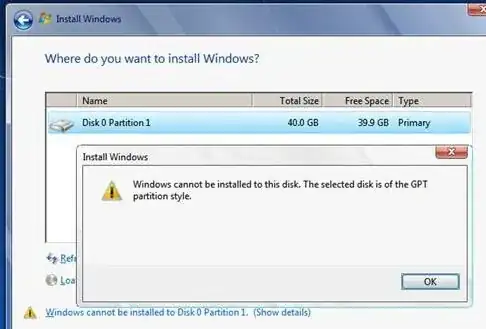A 500 GB HDD that started giving signs of obsolescence had multiple partitions, including Linux Mint and Windows 10.
This is on a BIOS laptop (non-UEFI).
That HDD had MBR partition table. Because of that, I had to create an extended partition for Linux in order to fit a fifth partition for swap. The table looked something like this:
Using Disks (gnome-disk-utility), I have created two images of the Windows partitions that had been created during the initial Windows 10 installation. These images were saved on an external drive.
Note that the Windows system was not affected by the signs of HDD failure that I had noticed. Those were limited to error on copying files from the large NTFS partition. All operating systems were working fine after the images were created.
I have then replaced the old HDD with a 1TB SDD on which I have created a GPT partition table so that I can have more than four partitions. I have restored the two Windows 10 images with Disks in Linux.. As I have a lot of space, I have installed another two Linux operating systems along my old Linux Mint 19.2 Xfce (restored with Timeshift) and a swap partition. (I am testing the improvements involved by the new SDD, that's why I want to see how Windows behaves, as it was very slow on the HDD. In the end I will keep only one Linux I imagine.) Gparted shows this:
The installation of Linux Mint 20.1 Cinnamon asked me to create a small bio_grub partition too.
The Windows 10 appears in grub boot list, but would not boot, hanging with no message on a black screen with one underscore sign.
I have tried to fix it with boot-repair (automatic repair) but without success. I don't know if "restoring mbr" makes sense on a GPT table. I guess not, given MBR options are not available in Boot Repair from Linux.
Could the problem be that the Windows 10 has been initially installed on a MBR partition table, but their images have been restored on a GPT partition table?
I would like to fix this from Linux. Can it be done? Or is it a must to try a Windows tool? (Could I create a System Restore disk from the smaller image called SYSTEM_RESTORE_WIN10.img?)
UPDATE
Using a Windows USB to repair didn't work. Restoring mbr from Command prompt only destroyed the grub. Trying to install windows gave the message that Windows cannot be installed on a GPT partition style, which now I know it's normal for a non-UEFI computer.
As I don't want to change the GPT partition table, there seems to be no way to boot Windows from those restored images unless maybe by some of the solutions discussed here: Booting Windows 7 / 10 from GPT Disk on BIOS (non-UEFI) systems.



